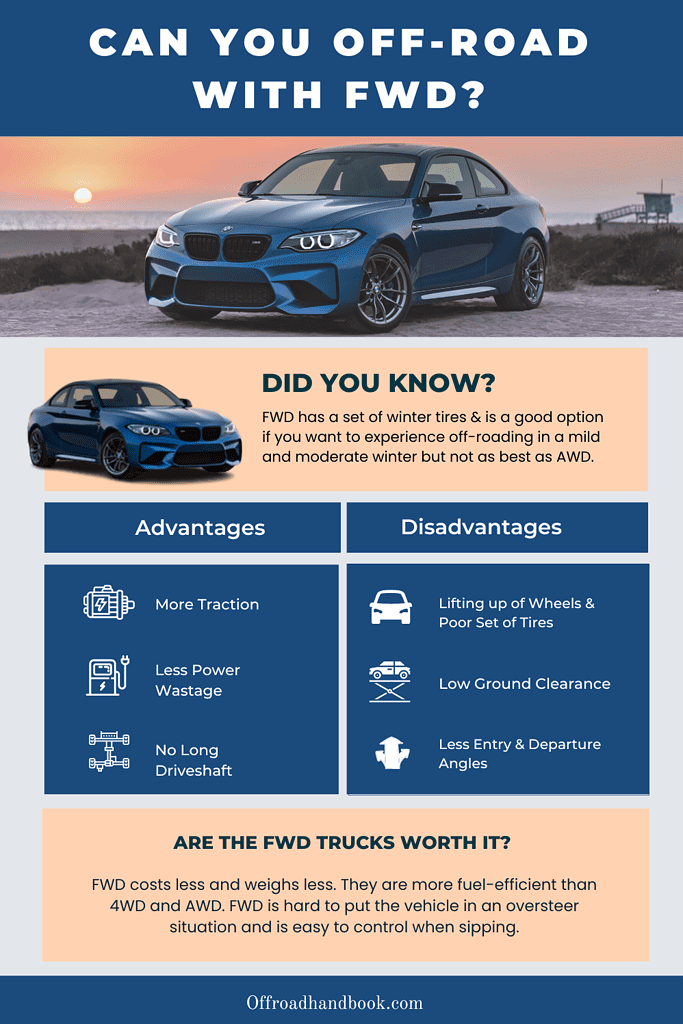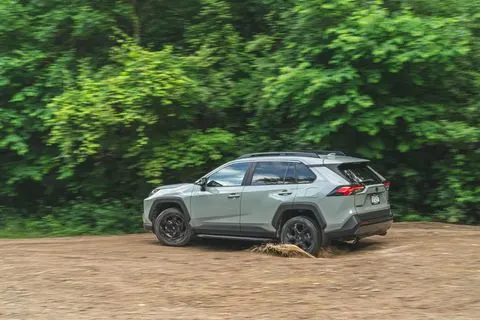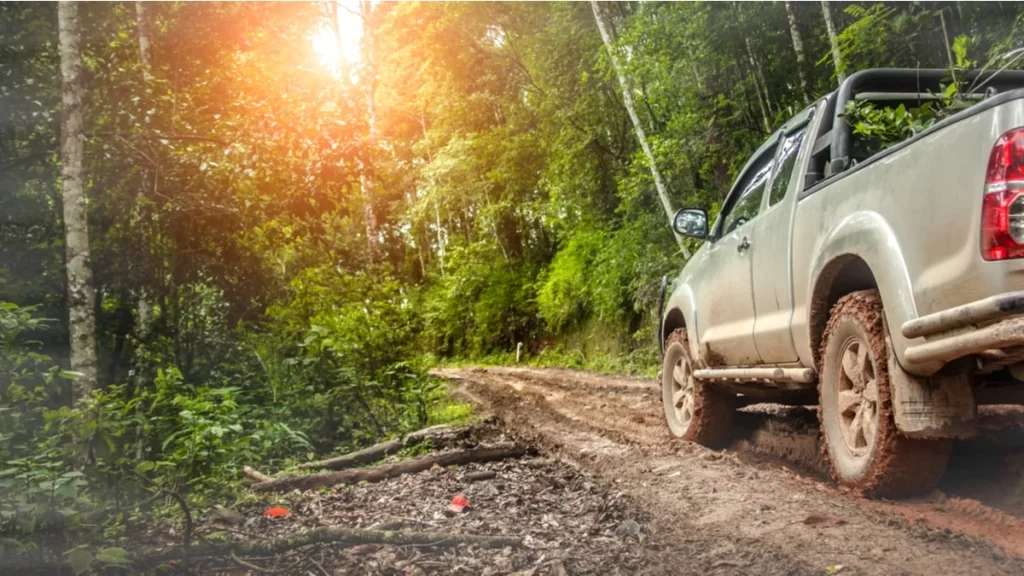In this article, I’ll discuss whether it is a good choice to off-road with FWD. Off-roading enthusiasts are always trying to get the best vehicles for their traveling experience. Some prefer to get the all-terrains due to their specific features, while others prefer four-wheelers. Can you off-road with FWD?
You can off-road with FWD, but it can sometimes lead you to get stuck in certain conditions. It is difficult to overcome the challenges faced on terrains where both the front and rear wheels are required. AWD vehicles can find traction on any surface, so it is better to opt for AWD instead of FWD.
The off-roading experience goes better with the vehicle having excellent features and characteristics. It is easy to off-road with an FWD, but the truth is something else.
It is possible to drive front-wheel vehicles in off-roading conditions. FWD gives more traction to the rear ones, like the engine weight, and the transmission system presses down the front wheels. It is better to go with the 4WD vehicle if you are looking for some serious off-roading with your vehicles.
We have created the infographic below that covers whether you can off-road with FWD. (You are welcome to use and share but please credit us if you do so.)

If we talk about tires and other components related to AWD or FWD, each holds some merits and demerits. It all depends on the person to select the one according to their need. FWD is considered safe for off-roading due to its various advantages.
FWD has shown better traction options on track with less power wastage. There is no longer a need for a long drive shaft in the case of FWD. Along with some advantages, there are also some flaws associated with FWD for off-roading.
It is tedious to lift the wheels, and FWD spins around without moving forward. FWD provides low ground clearance and has a poor set of tires.
Advantages of FWD for Off-Roading:
| More traction | FWD vehicles give good traction due to the weight on the front wheels from their transmission parts and engines. More tractions provide more capability to pull the vehicle on slippery terrains like mud. |
| Less power wastage | FWD vehicles have less power waste due to friction. It is because the FWD vehicle places a transverse position in the engine bay. The engine crank rotates in the same direction due to that positioning. Like RWD vehicles, there is no need for a differential to turn the torque output to a 90-degrees direction. |
| No long driveshaft | There is no need for a long driveshaft like in the case of RWD. There are fewer spare parts in FWD vehicles which indicates less friction, less power wastage, and less fuel consumption. |
Disadvantages of FWD for Off-Roading:
| Lifting up of wheels | The rear wheels are known to remain intact with the ground. They tend to press down as more weight comes to them. Front wheels tend to lift up from the ground and can lose their traction easily. They spin around without moving forward. |
| Low ground clearance | FWD vehicles are made up for on-road purposes and are not suitable for off-roading, so most of the time they have low ground clearance. |
| Less entry and departure angles | FWD vehicles have reduced entry and departure angles due to low ground clearance. It is easy to hit the vehicle and the damaged parts. |
| Tires | FWD vehicles are said to have a poor set of tires for off-roading. |
Tips to Go Off-Road with Your FWD Vehicle:
Here we will discuss some best tips that you can adopt for going off-roading with your FWD vehicles:
- Understand the capability of your vehicle
- Reduce the tire pressure
- Turn off the traction control
- Avoid locking the wheels
- Avoid spinning the wheels in the mud
- Use momentum and back up
- Use the traction aid

1. Understand the Capability of Your Vehicle:
The first tip is to understand the capabilities of your vehicle. It is not an excellent option to expect a similar off-road performance from an FWD vehicle like a 4WD or AWD. It is better to stay within your limits; otherwise, it might damage your vehicle.
2. Reduce the Tire Pressure:
It is a general trick for off-road enthusiasts and experienced off-roaders. Reduce the tire pressure of the front wheels and move forward whenever you lose traction of your vehicle. The footprint increases whenever the tire pressure is reduced and provides more surface area that touches the ground. It increases the overall traction.
Should You Lower Tire Pressure When Off-Roading?
3. Turn Off the Traction Control:
It is better to turn off the traction control cutting the wheel’s power and leading to loss of traction. The vehicle stops moving forward when the traction control system cuts off. It cuts power to the unnecessarily spinning of wheels. You can turn off the traction when you lose traction on slippery terrain.
4. Avoid Locking the Wheels:
It is advisable not to lock the wheels in a slippery downhill. Apply the brakes gently to drive in the forward direction safely. Locking down the wheels will slip the vehicle resulting in a control moment.
5. Avoid Spinning the Wheels in the Mud:
If the vehicle gets stuck in mud or sand, never spin the wheels unnecessarily, and don’t press the gas pedal too much. It will worsen the situation, and wheels bog down more in mud. Gently press the gas pedal and move the steer back and forth to find traction. It will lose traction when you spin the wheels.
6. Use Momentum and Back-Up:
If you cannot move forward and have lost traction, back up your vehicle and try again. It helps to move forward in many tough situations. It is necessary to be careful in case of ground clearance as there are chances that undercarriage parts might be damaged when hit by a protruding on the terrain.
Try to climb up the hill in reverse gear due to loss of traction. The vehicle’s weight comes to the front wheels and increases the traction and vehicle upwards on the incline.
7. Use the Traction Aid:
You can use some traction aids if you feel that your vehicle is not moving forward at specific tracks like sand, mud, or snow. Excessive off-roading often fills up the chassis with mud, snow, or sand, and the vehicle cannot get the traction required for moving forward. In such a scenario, it is recommended to place a carpet or gravel under the front wheels.
Reasons to Choose FWD:

There are many good reasons for selecting FWD for an off-roading experience. Some of them are:
- FWD provides improved traction on ice and snow. It makes an amazing experience for off-road enthusiasts who face the issue of traction at such tracks.
- FWD has better and easier resale values and can provide a good amount after using it for years.
- FWD is more capable than off-pavement vehicles.
- They are less expensive to buy and hold all the specific features that off-road enthusiasts demand in their vehicles.
- These vehicles provide a better economy and work excellently with less fuel consumption.
- They offer lower insurance premiums and are budget-friendly in all cases.
FWD and Better Off-Pavement:
AWD and FWD vehicles are compared regarding their better off-pavement on different surfaces. It is seen that all-wheel drives give better pavement on unpaved surfaces. There is less grip required on the surfaces like gravel, grass, or other soft surfaces.
These vehicles are optimized to find traction on any of such surfaces. Front-wheel vehicles perform well on mild off-road surfaces and even on dirt roads. There are chances of getting stuck in the mud with AWD.
FWD- Performance in the Rain:
All-wheel drives are known to perform well in the rain. AWD is much better than FWD regarding the performance in the rain. FWD cannot sense the wheel slip and cannot adapt well to wet weather.
The factors of oil floating on the surface of roads and wet leaves are a hazard to driving. AWD can keep the vehicle stable on the road and wet pavement. AWD can engage the vehicle on the wet pavement when wheels start to slip.
FWD- Performance in Ice and Snow:
The all-wheel drive performs better in ice and snow due to the engagement of all four wheels. It keeps the vehicle on the move and can handle snow and ice situations. AWD has modern traction and stability controls. FWD also performs well in the snow but is not the best like AWD.
Their engine is located on overdrive wheels and provides traction. FWD having a set of winter tires is a good option for saving money if you want to experience off-roading in a mild and moderate winter. But still, AWD or SUV is a better option for ice and snow track.
FWD and Winter Tires:
FWD tires like Bridgestone Blizzak or Yokohama ice guard are a perfect replacement for AWD. These are equipped with soft rubber compounds and tread designs that help create an excellent grip on snow and ice. Good tires with specific features make a great difference in traction.
It is wise to invest in a good set of winter tires, and AWD tires provide the best performance. Still, some FWD tires may outperform well on snow and ice.
FWD and Traction:
There is always an issue of traction and stability controls with the cars. It is a fact that modern AWD and FWD can easily deal with traction and have electronic systems that can monitor the wheel’s motion.
The system is capable enough to transfer the torque to the drive wheels for maintaining traction. Traction is maintained very well when one wheel slips to the other. The right choice of tires can lead to the long way of equalization and the best off-roading experience.
Also Read:
Can 2WD Go Off-Road? Understand the Dynamicity
What Is The Most Reliable Off-Road 4×4 ATV?
Frequently Asked Questions (FAQs):
Are FWD vehicles a good option for off-roading?
Front-wheel-drive vehicles perform well on mild off-road surfaces but are not the best as all-wheel-drive systems. AWD is optimized to find traction on any surface area, and a few miles of dirt on the road cannot stop a new AWD car.
Can a driver go off-roading with a 2WD?
It is completely fine to go off-road in a 2WD. You can go almost anywhere on the trails while taking reasonable measures. The four-wheel-drive offers a luxury trip, and there are better chances of not getting stuck.
Is FWD considered a good option as 4WD?
4WD provides greater control and maneuverability in difficult terrains like mud, snow, and rocks. FWD is not expected to be taken off on roads. They will perform poorly if the front wheel loses traction.
Are the FWD trucks worth their characteristics?
FWD costs less and weighs less. They are more fuel-efficient than 4WD and AWD. FWD is hard to put the vehicle in an oversteer situation and is easy to control when sipping.
Can you go off-roading with 4×2?
4×2 will make light work of the roughest worksites, back roads, and bush tracks. On the other hand, a 4-by-4 ride provides ground clearance, height, and wheel travel.
Is it worth buying a 2-wheeler?
Two-wheel vehicles are less expensive than 4WD. They use less energy for powering the wheels and are more fuel-efficient, lighter, and agile.
Is 2WD considered a good option?
2WD cars were tested on winter tires over slippery conditions. The results indicated that 2WD cars with winter tires perform dramatically better in such conditions.
Is the performance of FWD better in the rainy season?
FWD vehicles provide better traction in the rain because of the weight of their engine and transmission over the front wheels. They provide good traction in snow and rain and make you drive faster.
Is the performance of FWD better in the snow?
FWD perform better in snow, and it is safe to drive in such condition with preventive measures. The FWD drive vehicle puts its weight directly above the front tires, giving traction.
Do front-wheel vehicles drive badly in a truck?
Front-wheel drives reduce weight and production costs. They improve the fuel economy and traction and the engine’s weight and transmission.
Why should people purchase a 2WD truck?
It is advantageous to purchase a 2WD truck due to their less weight. Additional metal is required for building the counterparts of a 4WD, and they have more weight than a 2WD.

This is Surya. I am an experienced off-roader. I have been off-roading for many years across several terrains. I am passionate about 4×4 driving and want to share my knowledge and experience with others.
My goal is to provide you with the most comprehensive and unbiased information about off-roading.
I curated this article through my personal experience and expertise, and I hope it helps you with what you are looking for.

 (+91)9123743026
(+91)9123743026
 24/1 Nibedita Sarani. M.B. Road, Kolkata- 700051, India
24/1 Nibedita Sarani. M.B. Road, Kolkata- 700051, India